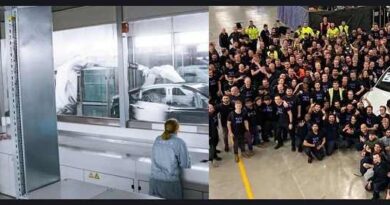2025 Volkswagen ID. Buzz: Relationship with a Stylish Electric Van- Review
The 2025 Volkswagen ID. Buzz is finally here after years of anticipation, but it’s arrived with mixed feelings. Delayed for years, it comes with some noticeable flaws: outdated software, mediocre range, and a high price tag. On top of that, its user interface leaves much to be desired, and its overall practicality falls short of a traditional minivan. Despite these shortcomings, there’s something about the ID. Buzz that makes you want to love it, mainly thanks to its stunning design.
In this review, we’ll break down the key aspects of the 2025 Volkswagen ID. Buzz, from its beautiful exterior to its underwhelming range, and compare it with some of its main competitors.
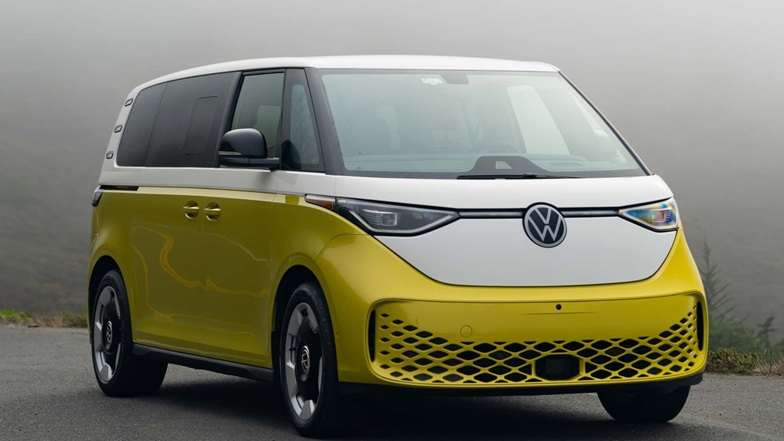
2025 Volkswagen ID. Buzz: Key Features at a Glance
| Features | Volkswagen ID. Buzz | Traditional Minivans (e.g., Toyota Sienna) |
|---|---|---|
| Starting Price | $61,545 | $36,135 |
| Range (RWD/AWD) | 234 miles / 231 miles | N/A (Hybrid/Combustion Engines) |
| Battery Size | 91 kWh | N/A |
| Max Power | 335 hp (AWD), 282 hp (RWD) | Around 245 hp (Toyota Sienna Hybrid) |
| Interior Space (Third Row) | Spacious but not foldable | Fold-flat third-row seats |
| Cargo Space (Behind Third Row) | Less than minivans but more than most crossovers | Around double the space compared to ID. Buzz |
| Notable Design Feature | Two-tone paint options | Typically plain, not as eye-catching |
A Design That Steals the Show
When it comes to electric vehicles (EVs), many brands prioritize performance and efficiency over style. However, the Volkswagen ID. Buzz stands out because of its charming, nostalgic design, heavily inspired by the iconic VW Microbus from the 1960s. In a world dominated by angular, aggressive cars, the ID. Buzz offers a friendlier, more approachable aesthetic. Its two-tone paint options—ranging from bright yellow to blue and green—add to its unique personality, making it one of the most visually exciting vehicles on the road.
Despite its charming looks, the ID. Buzz still adheres to Volkswagen’s modern design language, which holds it back from being a true retro throwback. The headlights and grille are still angular, and the overall shape is less rounded than you might expect for a “friendly” vehicle. Nonetheless, the design is refreshing, offering something different in a sea of boring SUVs and crossovers.
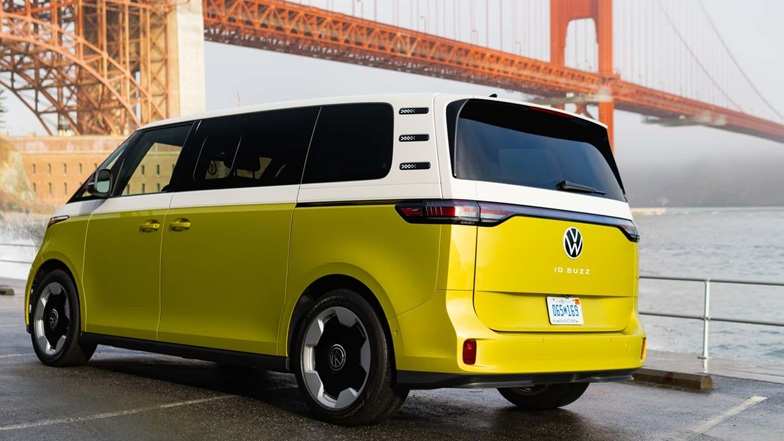
Interior: Comfort Meets Compromise
Stepping inside the ID. Buzz, you’ll find a mix of modern Volkswagen touches—for better and worse. The available color schemes, such as sandy beige, copper, or dark brown with faux wood, add a bit of warmth, but the interior also suffers from a few poor design choices. Unfortunately, the infotainment system and gauge cluster are carried over from the Volkswagen ID.4, which detracts from the vehicle’s overall charm.
The user interface in the ID. Buzz is clunky, with a touch bar for volume control and a host of buttons on the steering wheel that are easy to press accidentally. The infotainment system also has a confusing array of menus, making it more frustrating to use than in some competitors.
However, the Buzz’s interior isn’t all bad. It has ample storage, with cubbies spread throughout the cabin. The center console is removable and even comes with cute features like a bottle opener and an ice scraper. You can even mount the console in the second row for added flexibility. The rear seats are spacious enough to comfortably seat a six-foot adult in any outboard position.
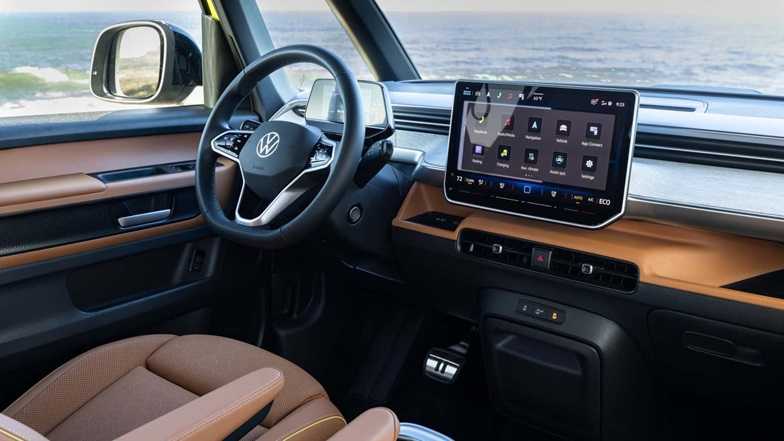
Unfortunately, the ID. Buzz’s practicality doesn’t fully match its spacious interior. The third row doesn’t fold into the floor, and removing the second row requires more effort than it should, involving a Torx head and some elbow grease. This lack of versatility makes the ID. Buzz less practical than traditional minivans, like the Toyota Sienna or Chrysler Pacifica, where fold-flat seats and easy removal of the second row are standard.
Performance: Plenty of Power, Mediocre Range
While the ID. Buzz’s design may be its main selling point, its performance specs are solid but not game-changing. The van is available with either dual-motor all-wheel drive (AWD) or single-motor rear-wheel drive (RWD). Both configurations use a 91 kWh battery and provide plenty of power. The AWD version delivers 335 horsepower, while the RWD model offers 282 horsepower. With 413 lb-ft of torque, the ID. Buzz feels quick, even with its 5,968-pound curb weight.
However, when it comes to range, the ID. Buzz falls short. The RWD version gets an EPA-estimated range of 234 miles, while the AWD model only manages 231 miles. These figures are on the lower side for a modern EV, especially one designed for road trips and family adventures. In real-world driving, with some cargo and weather factors, you’re likely looking at closer to 163 miles between stops, considering that most drivers will charge between 10% and 80% to optimize battery longevity.
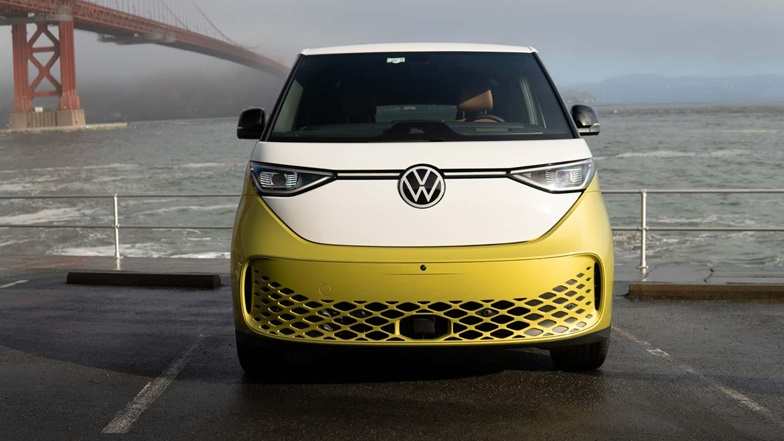
For comparison, many traditional minivans can go hundreds of miles on a single tank of gas, and hybrids like the Toyota Sienna offer similar fuel efficiency without the range anxiety.
| Comparison of Volkswagen ID. Buzz vs. Minivans |
|---|
| Volkswagen ID. Buzz |
| Range: 234 miles (RWD), 231 miles (AWD) |
| Price: $61,545 and up |
| Interior Space: Less cargo room than minivans |
| Third-row flexibility: No fold-flat third row |
| Notable feature: Fun, retro design |
| Toyota Sienna |
| Range (Hybrid): 600+ miles |
| Price: Starts at $36,135 |
| Interior Space: More flexible, fold-flat seats |
| Notable feature: Practicality and reliability |
The Drive: Fun, But Not Perfect
Driving the ID. Buzz along the Pacific Coast Highway is where the vehicle starts to shine—at least in terms of enjoyment. The van handles well for its weight, offering plenty of power and predictable, safe steering. It’s comfortable on highways, and despite its size, it’s easy to drive around the city.
That said, it’s not ideal for every road. On twistier routes, the ID. Buzz struggles a bit, especially with its heavy weight. On downhill sections, you can feel the van’s mass pushing the vehicle, making for an occasionally uncomfortable ride. Additionally, if you’re prone to motion sickness, like some passengers in electric vehicles, the ID. Buzz’s heavy build and lack of body control on winding roads might aggravate that issue.
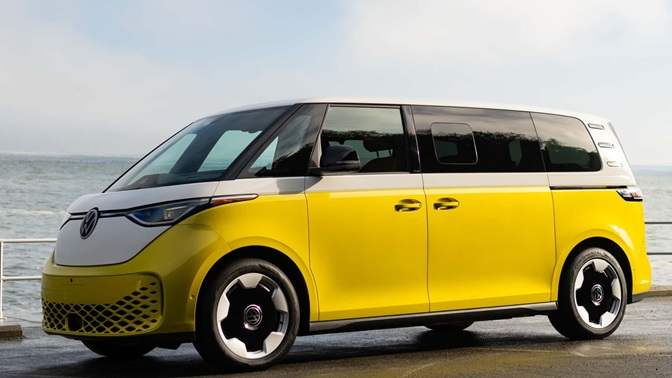
Still, it’s a van designed more for comfort than performance, and in that department, it delivers. Highway cruising is smooth, and the seats are plush, with armrests designed for long-haul comfort. VW’s lane-keeping assist works well, and the driving position is upright, reminiscent of commercial vans.
However, the forward visibility isn’t the best, which is surprising given its boxy design. Nevertheless, it’s comfortable, and you can count on the ID. Buzz to handle family trips, provided they’re not too long due to the range limitations.
ID. Buzz vs. Competitors: Is It Worth It?
The Volkswagen ID. Buzz is undoubtedly a head-turner, but how does it stack up against other vehicles in its category? Here’s a quick breakdown of the ID. Buzz vs. its main competitors:
| Competitor | Starting Price | Max Range | Key Features |
|---|---|---|---|
| Volkswagen ID. Buzz | $61,545 | 234 miles (RWD), 231 miles (AWD) | Retro design, spacious third row |
| Toyota Sienna Hybrid | $36,135 | 600+ miles (Hybrid) | Hybrid efficiency, practical design, fold-flat seats |
| Chrysler Pacifica Hybrid | $48,320 | 500+ miles (Hybrid) | Hybrid-electric, fold-flat seats, spacious interior |
| Ford Mustang Mach-E | $36,495 | 320 miles | EV SUV, sporty performance, lower price |
The ID. Buzz is clearly more expensive than traditional minivans, with its starting price hovering at $61,545, and that’s for the base model. If you want AWD or special features like the two-tone paint or captain’s chairs, you’ll be paying upwards of $71,545.
While the Buzz offers a fun, retro-inspired driving experience, it doesn’t have the same practicality or range as some of its **cheaper,
more established minivan competitors**. But if style and personality matter more to you than endless cargo space and range, the *Volkswagen ID. Buzz* may just steal your heart.
Final Thoughts
The Volkswagen ID. Buzz is far from perfect, but it’s a vehicle that knows how to make an impression. Its retro design and nostalgic charm set it apart from other vans and EVs, and while it may fall short in terms of practicality and range, it offers plenty of personality. If you’re someone who values style over function, the ID. Buzz might be the EV for you. But if you need more space, flexibility, or driving range for family adventures, a traditional minivan might be the better option.
Related Post

